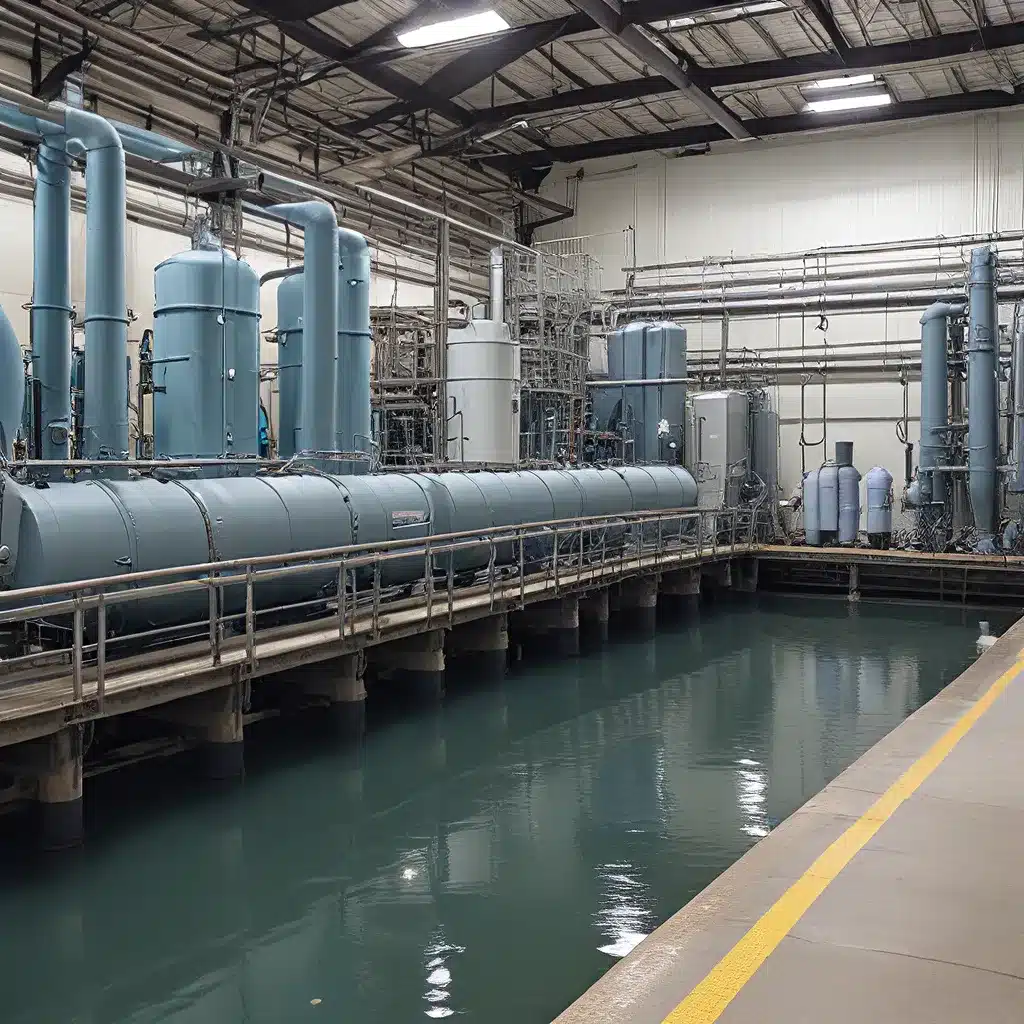
Battling the Murky Waters of Industrial Wastewater
Have you ever wondered what happens to all the water used in industrial processes? The truth is, this wastewater often poses a significant threat to the environment if not treated properly. As someone who cares deeply about our planet, I’ve made it my mission to uncover the latest and greatest industrial cleaning techniques that are helping water treatment facilities stay ahead of the curve.
Let me paint you a picture. Imagine an industrial facility churning out products, its machinery humming with activity. But what you don’t see are the gallons upon gallons of contaminated water being flushed out, filled with everything from heavy metals to grease and oil. This wastewater, if left untreated, can wreak havoc on delicate ecosystems, polluting rivers, lakes, and even groundwater supplies.
It’s a sobering thought, but the good news is that pioneering water treatment technologies are emerging to tackle this challenge head-on. I recently had the chance to dive into the world of Inland Waters Inc., a company that’s making waves (pun intended) in the industrial cleaning space. Their approach is nothing short of revolutionary.
Mastering the Art of Membrane Filtration
At the heart of Inland Waters’ technology lies a powerful weapon: ceramic membrane filtration. These sturdy, high-performance membranes are designed to remove even the most stubborn contaminants from industrial wastewater, including solids, oils, grease, and heavy metals.
“It’s kind of like a high-tech sieve,” explains Jamal, the lead process engineer at Inland Waters. “The membrane acts as a barrier, trapping all the gunk and grime while letting the clean water pass through. It’s a game-changer for industrial facilities looking to stay ahead of strict environmental regulations.”
What sets Inland Waters’ membrane technology apart is its durability and efficiency. Unlike traditional polymer-based membranes, these ceramics can withstand the harshest of industrial conditions, from corrosive chemicals to extreme temperatures. And the best part? They require significantly less energy to operate, helping industrial clients slash their utility bills and carbon footprints.
Customizing Solutions for Every Need
But Inland Waters doesn’t just offer a one-size-fits-all solution. They understand that every industrial facility is unique, with its own set of challenges and requirements. That’s why they take a tailored approach to designing their water treatment systems.
“We’re like industrial cleaning ninjas,” Jamal quips. “We analyze the specific wastewater streams, the desired water quality, and the operational constraints of each client. Then, we custom-engineer a solution that’s a perfect fit.”
This level of customization ensures that Inland Waters’ systems are not only effective but also efficient, minimizing the footprint and maximizing the performance for each client. From mining operations to chemical plants, they’ve tackled some of the most complex industrial wastewater challenges, consistently delivering outstanding results.
Closing the Loop on Water Scarcity
But Inland Waters’ impact goes beyond just cleaning up wastewater. They’re also helping to address the growing global water scarcity crisis by enabling water reuse and reclamation.
“Think about it – we have a finite amount of freshwater on this planet, and industry is a major consumer,” Jamal explains. “By treating industrial wastewater to such a high degree, we can actually recycle that water back into the production process, reducing the demand for fresh water sources.”
This closed-loop approach not only conserves precious water resources but also saves industrial clients money on water procurement and disposal fees. It’s a win-win for the environment and the bottom line.
Navigating the Regulatory Landscape
Of course, staying compliant with ever-evolving environmental regulations is no easy feat for industrial facilities. But Inland Waters’ expertise extends beyond just water treatment; they also help their clients navigate the complex regulatory landscape.
“We’re not just a supplier – we’re a partner,” Jamal emphasizes. “Our team of regulatory specialists works closely with each client to ensure their water treatment systems not only meet but exceed the latest standards. It’s all about keeping them ahead of the curve and future-proofing their operations.”
Whether it’s securing the necessary permits, optimizing for specific discharge limits, or preparing for surprise inspections, Inland Waters is there to guide their clients through the maze of environmental regulations. It’s a level of support that sets them apart from the competition.
Pioneering a Sustainable Future
As I reflect on my time with Inland Waters, I can’t help but feel a sense of optimism for the future of industrial water treatment. These innovators aren’t just cleaning up wastewater – they’re pioneering a more sustainable path forward for industry.
“At the end of the day, it’s all about doing the right thing,” Jamal says with conviction. “We have a responsibility to protect our planet, and that means rethinking the way we use and manage water in industrial processes. With the right technology and the right mindset, we can make a real difference.”
It’s a sentiment that resonates deeply with me. As the world grapples with the challenges of climate change and resource scarcity, companies like Inland Waters are leading the charge, proving that environmental stewardship and industrial progress can go hand-in-hand.
So, the next time you hear the hum of machinery at an industrial facility, remember the unsung heroes working tirelessly behind the scenes to keep our waters clean and our planet healthy. They may be the unsung heroes, but their impact is undeniable.


